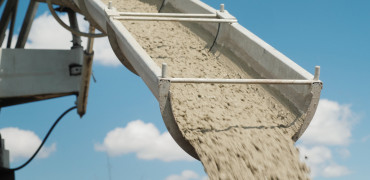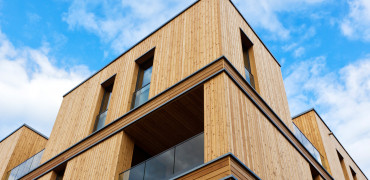With Green building now an official ‘trend’ and global warming our top priority, there is a palpable shift in consumer demand.
With more and more people building Green, more and more companies are developing innovative green materials.
So how can we build a healthier urban environment?
Maybe the next building you chose to buy or build will contain fungus, plant species, or weeds!
These ingredients are increasingly becoming the new generation of biopolymers and biocomposites - products that mainly comprise of plant, animal, fungal and bacterial sources.
All these can now be architecturally specified and used in construction.
This is no longer science fiction but rather the way forward for our planet
Planet-saving technologies
Our planet has an abundance of renewable natural resources and through a combination of both science and design we can harness the potential of our planets resources and bring them to realisation.
With the introduction of new technologies simple and renewable natural substances from grasses to seaweeds can be converted to be used as environmentally friendly construction materials.
Continually with the advancement of new technologies all these biopolymers have become increasingly easy to produce allowing them to offer more to the world of architecture. So smart alternatives are the way forward, look for innovative new biopolymers and composites such as the ones below.
Mushroom Insulation
Mushroom roots or mycelium can be utilised to produce building materials that are stronger than concrete, more insulated than fibre glass and completely compostable.
With a small carbon footprint, mycelium grows underground without light and the need for external energy sources.
Evocative is one of the first global companions to offer mycelium for building applications. It has created a eco-friendly insulation material that when injected between an interior and exterior wall becomes so strong as it grows that the walls need no other supporting structure. It’s insulation factor is greater than that of fibre glass!
Here on this side of the Pond, other companies are also looking at this, such as Biohm, who share a London office with Mitsubishi Electric.
Milkweed Insulation
Milkweed is a perennial plant whose seeds are attached to silky fibres that, much like dandelions get airborne with a gust of wind.
Because these fibres are hollow they are lightweight and insulating.
They make an ideal component to construction grade thermal insulation. Milkweed can also be used in the highly polluting fashion industry and can be used as a humane alternative to goose down.
Hemp Bricks
Cement production as we are all aware carries a heavy toll on our environment, it is the most energy intensive of all our industries.
Equilibrium Sri has developed Biomattone - an alternative to the rational cement block. It is made from a lime and hemp compound.
The lime reacts with the hemp’s cellulose to harden it, this forms a solid material that can be used as roof insulation or made into compressed blocks suitable for construction.
In addition to the above these blocks also absorb and store carbon dioxide making it a carbon neutral building product.
Seaweed
When used properly seaweed can be the ultimate sustainable building material. It is available all over the planet and reproduces itself in the sea which is crucial to a world where many countries are threatened by deforestation.
Seaweed can be the cheap alternative to wood and also has many major advantages: it is non-toxic, fireproof, it provides excellent insulation, reduces CO2 and has a life expectancy of in excess of 150 years.
Lots of options
There are also many examples of projects using biocomposites, cork, corn and soybeans. Seaweed, tomato stems, grass and straw.
Combined with clever engineering these make viable alternatives to traditional building materials. Showing that it is possible to build a healthy, eco-friendly home that is cost competitive.
This is no longer science fiction but rather the way forward for our planet.
Kirsty Hammond is publisher and editor of Specifier Review




